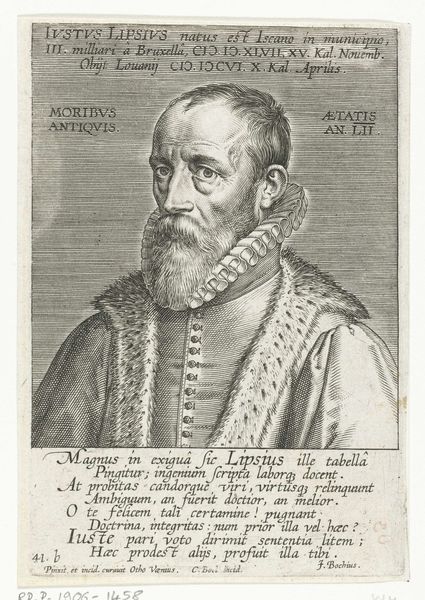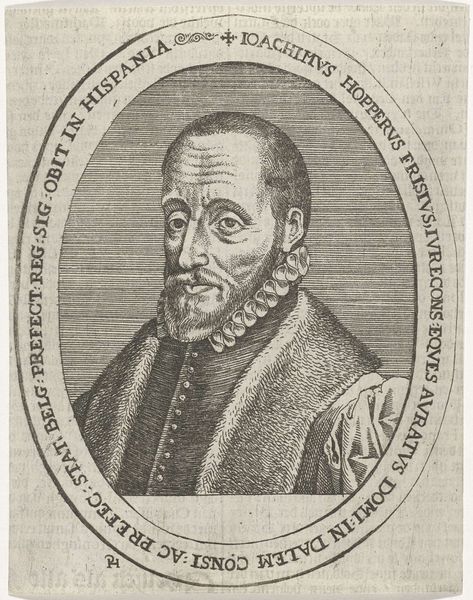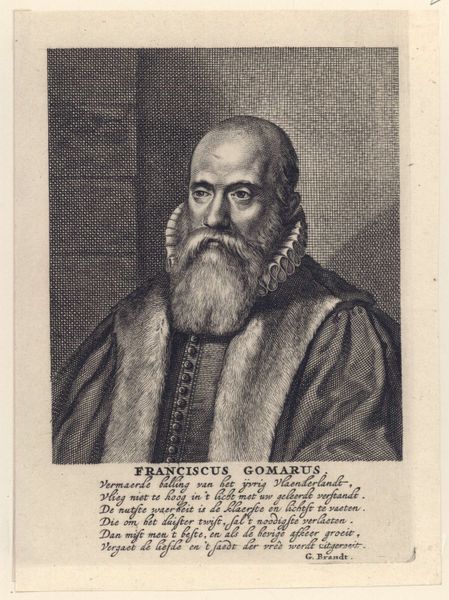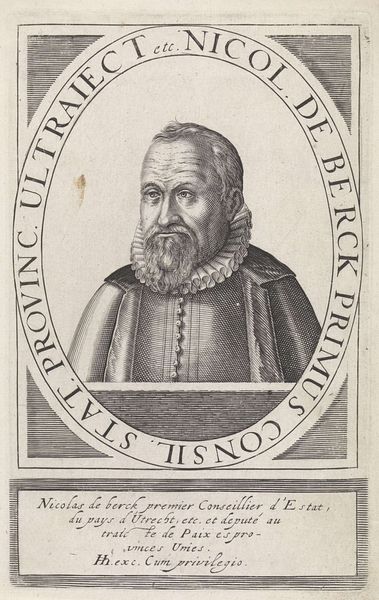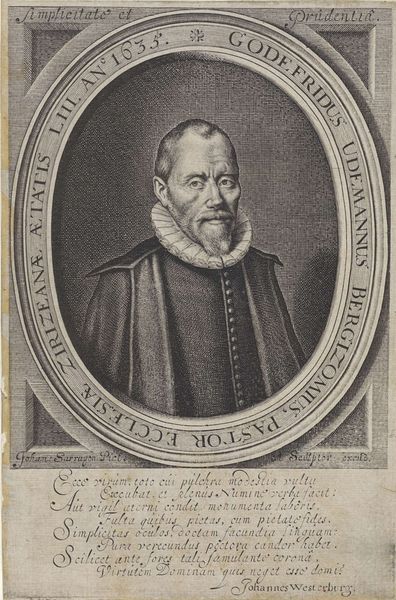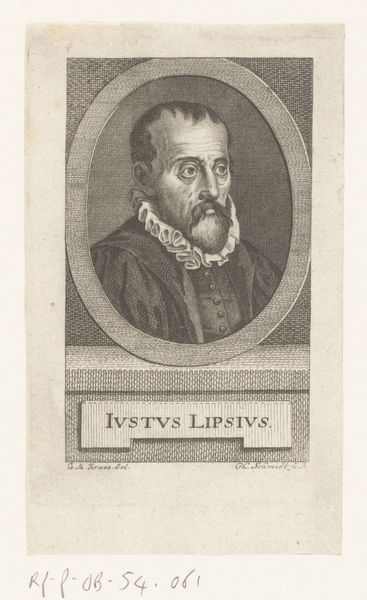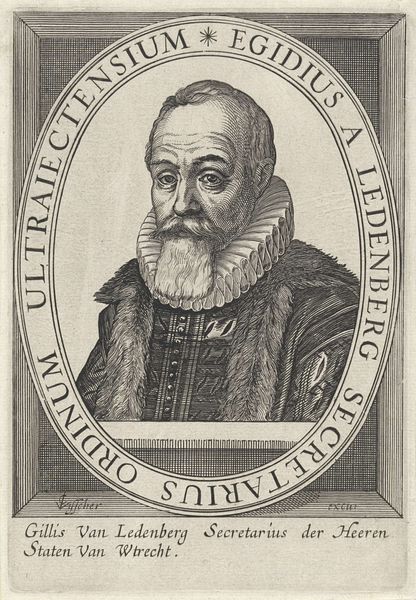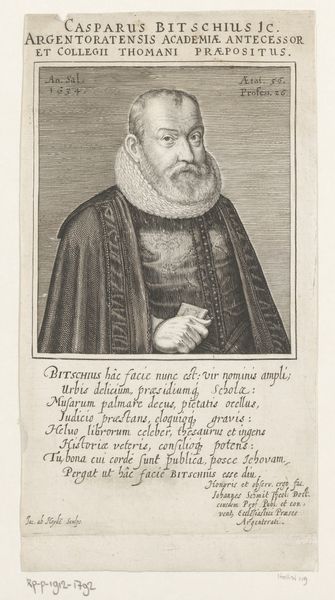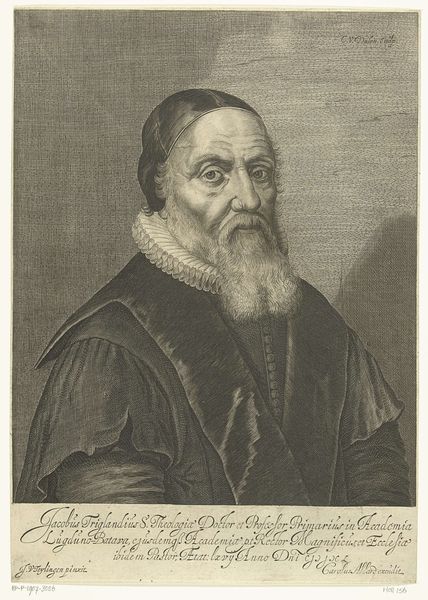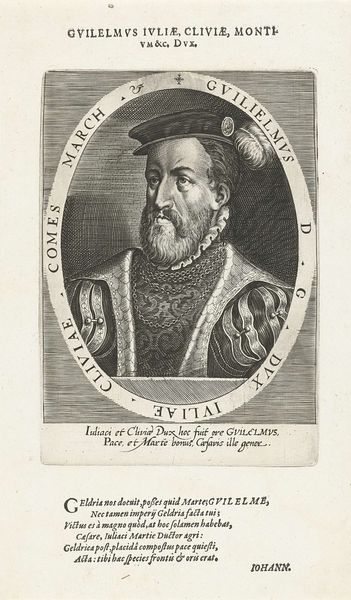
print, engraving
#
portrait
#
baroque
# print
#
figuration
#
line
#
history-painting
#
northern-renaissance
#
engraving
Dimensions: width 117 mm, height 168 mm
Copyright: Rijks Museum: Open Domain
This is a portrait of Justus Lipsius, made by Philips Galle around 1606. The composition presents Lipsius in a formal pose, encased within sharply defined lines that delineate his fur-collared coat, pleated ruff, and the details of his face. The texture, achieved through detailed engraving, creates a contrast between the plush fur and the smoothness of his skin. The tight, controlled linework speaks to the prevailing artistic and philosophical interest in order and clarity during the late Renaissance. Lipsius, a philosopher who advocated for Stoicism, is depicted with meticulous precision. The engraving uses a semiotic system of lines and textures to convey his character and status. The formal qualities of the portrait – its structured composition and attention to detail – mirror the Stoic values of self-control, reason, and discipline that Lipsius championed. Consider how the artist uses line and form not just to represent Lipsius, but to suggest the intellectual and moral framework in which he operated. The artwork serves not just as an image of a man, but as a statement about philosophical ideals.
Comments
No comments
Be the first to comment and join the conversation on the ultimate creative platform.
